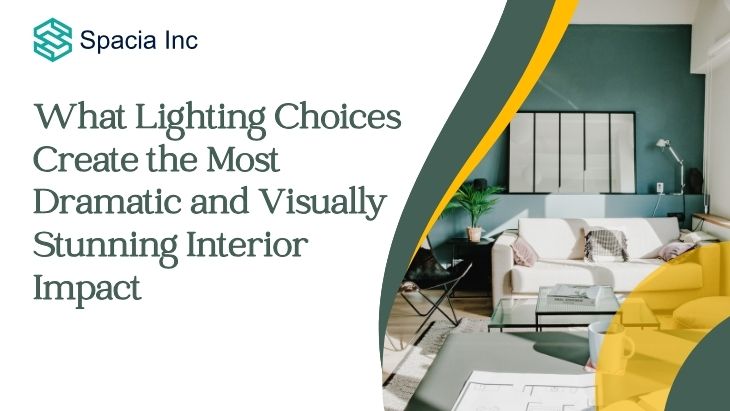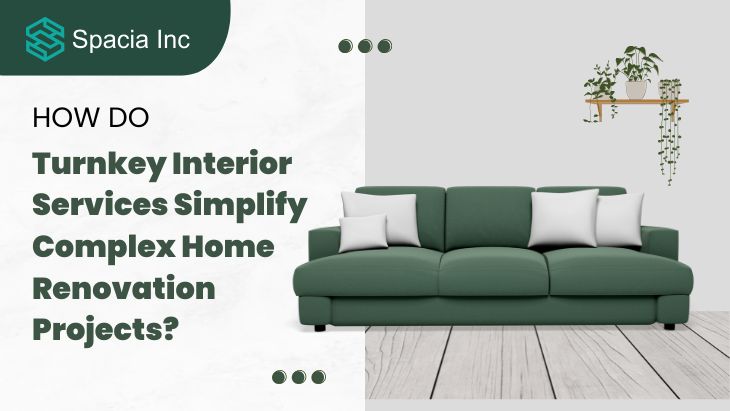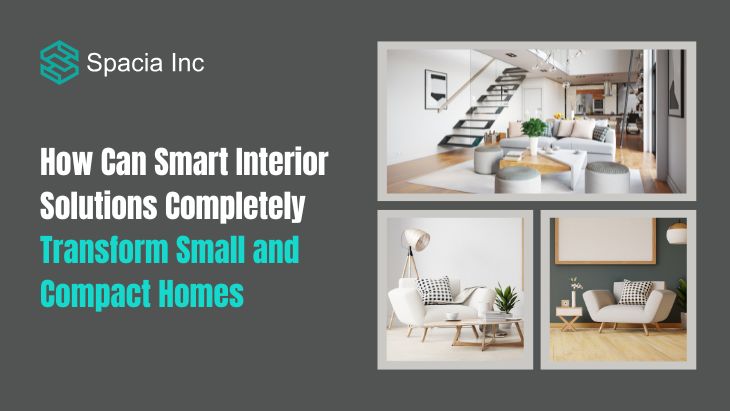What Are Smart Interiors?
Smart interiors refer to thoughtfully designed environments that integrate advanced technologies, connectivity, and intelligent systems into architectural and furnishing elements. The aim is to enhance comfort, efficiency, and user experience. Think of workspaces that adapt to temperature, lighting, acoustics, and occupancy automatically a seamless fusion of design and technology that empowers people to focus on meaningful work.
As businesses move beyond aesthetics to create environments optimised for both performance and wellbeing, Interior Design & Turnkey Solutions are proving essential. These services don’t just deliver stylish interiors, they integrate tech, ergonomics, and adaptability into a holistic, future‑ready package.
Why They Matter in Modern Workspaces
Modern workplaces are under pressure to support hybrid work, foster collaboration, and reduce environmental impact, all while maintaining user comfort. Smart interiors provide the infrastructure to deliver on these expectations, transforming static spaces into responsive, efficient ecosystems. For forward‑looking companies, this shift isn’t optional—it’s strategic.
Evolution of Workspaces Over Time
From Cubicles to Collaboration Zones
Traditional cubicle farms prioritised uniformity and predictability. Over time, offices evolved into open plan environments aimed at improving communication. Today’s needs go further: flexible collaboration zones, quiet retreats, hot‑desking areas, and wellness spaces reflect a more human‑centric approach to design one, that smart interiors enhance further.
The Rise of Remote and Hybrid Work
The pandemic accelerated hybrid work models. While remote work continues, offices serve as hubs for team collaboration and culture-building. Smart interiors can accommodate fluctuating occupancy, bridge the gap between physical and virtual presence, and make in-office interactions more rewarding.
Key Elements of Smart Interiors
1. Smart Lighting Systems
Dynamic lighting systems adjust brightness and colour temperature based on the time of day, activity, and available daylight. Integration with occupancy sensors ensures energy-efficient operation and supports circadian rhythms to boost focus and mood.
2. Adaptive Furniture
Furniture that transforms based on user activity—such as height-adjustable desks, modular meeting pods, and reconfigurable seating—allows spaces to flex on demand. These systems are often integrated with room-booking platforms to streamline use and availability.
3. Sensor-Based Climate Control
IoT sensors monitor temperature, air quality, and CO₂ levels in real time. Intelligent HVAC solutions then automatically regulate airflow and ventilation to maintain optimum comfort and energy efficiency.
4. Acoustic Design for Productivity
Smart sound-masking systems, mobile acoustic pods, and absorbent materials adapt to noise levels, creating zones for deep work or collaboration while minimising disruption.
5. IoT-Enabled Devices
Sensors, lighting, climate systems, occupancy trackers, and wayfinding displays can be connected to a central dashboard. This provides live data on usage, environmental comfort, and resource allocation, enabling data-driven decisions.
The Benefits of Smart Interiors
1. Boosting Employee Productivity
By automating control of light, temperature, and acoustics, smart interiors reduce physical distractions and allow people to focus. Spaces align with user needs, improving concentration and output.
2. Enhancing Well-being and Comfort
Personalised control over workspace conditions—desk height, lighting levels, air quality—allows employees to create a healthier, more comfortable environment, reducing strain and stress.
3. Optimising Energy Consumption
Automated systems respond to occupancy and natural light, which minimises energy waste, lowers utility costs, and supports sustainability goals.
4. Supporting Collaboration and Creativity
Smart interiors make space transformation effortless. Teams can reconfigure meeting zones, switch from workstations to group areas overnight, and access digital whiteboards or shared devices as needed.
Technologies Powering Smart Workspaces
Artificial Intelligence & Machine Learning
AI analyses workspace data to identify usage patterns and predict trends. For instance, it may recommend when to adjust the layout, reassign desks, or fine‑tune climate systems for comfort.
Internet of Things (IoT)
IoT devices—small sensors and actuators connect the physical environment to digital platforms. This integration gives managers visibility into space utilisation, comfort levels, and system efficiency.
Augmented Reality (AR) in Interior Planning
Using AR, designers and stakeholders can visualize furniture layouts, lighting designs, and wayfinding flows before physical implementation. This reduces risk and enables faster iterations.
Design Strategies for Future‑Ready Offices
Flexibility Is the New Standard
Allowing spaces to evolve with team growth and changing work modes is essential. A modular layout, mobile furniture, and flexible partitions let organisations adapt quickly without costly reconstruction.
Human‑Centric Design Principles
Smart interiors prioritise people, not just technology. UX-driven systems offer intuitive control over environmental settings and ensure that technology enhances, rather than distracts from, the working experience.
Integration with Digital Tools
Workspace analytics dashboards, room booking systems, digital signage, and unified communication platforms should all integrate with the physical design to deliver a cohesive experience.
Real‑World Examples of Smart Interior Workspaces
Big Tech Offices Leading the Way
Major tech giants have adopted smart and adaptive office designs:
- Offices are equipped with sensor-controlled lighting and desks that adjust automatically.
- Smart conference rooms that optimise temperature, lighting, and AV based on occupancy.
- Wellness zones with dynamically adjusted sound and light levels.
These implementations enhance employee experience and efficiency while reinforcing innovation as part of brand identity.
Startups and Small Businesses Going Smart
Smart interiors aren’t only for large enterprises. Innovative startups are leveraging flexible furniture, modular meeting pods, and smart booking systems to create agile and cost-effective environments that grow with them.
Challenges in Implementing Smart Interiors
Cost and ROI Concerns
Outfitting office interiors with smart technology requires investment. Organisations must weigh upfront costs against long-term gains in productivity, energy savings, and employee retention.
Privacy and Data Security
Sensor networks and IoT systems collect data on occupancy and behaviour patterns. Ensuring this data is anonymised, secured, and GDPR-compliant is critical to earning trust and compliance.
Integration with Legacy Systems
Older buildings and furniture systems may not support smart features. A phased approach—integrating smart elements with existing infrastructure—is often required to bridge the gap.
The Future of Work and Smart Interiors
Predictive Design Based on Employee Behaviour
As systems learn behaviours over time, they can predict staffing levels, preferred layouts, and lighting needs, enabling preemptive changes that boost comfort and readiness.
Automation in Space Utilisation
In the future, office systems may automatically shift rooms from focus zones to collaborative areas based on schedule and occupancy, optimising real-time utility.
Tips to Start Your Smart Office Journey
1. Audit Your Current Workspace
Begin with a comprehensive audit—digital or human-led—to assess lighting, air quality, usage patterns, and workflow bottlenecks. Data insights will shape informed decisions.
2. Set Clear Objectives and Budget
Define what you aim to achieve: lower energy use, better focus zones, hybrid enablement, or enhanced wellness. Align these goals with a clear budget and timeline.
3. Choose Scalable Solutions
Start small, a smart lighting pilot, flexible workstation prototypes, or sensor-based occupancy tracking. Choose solutions that can expand or evolve rather than locking into a single vendor or architecture.
Conclusion
Smart interiors hold the key to building future-ready workspaces that adapt, respond, and empower. Integrating intelligent systems with human-centric design, flexible layouts, and data-driven insights can elevate workplace performance, wellbeing, and sustainability.
For businesses ready to step into tomorrow, partnering with a firm offering Interior Design & Turnkey Solutions ensures a holistic, future-proof approach. At Spacia Inc, our team specialises in delivering spaces that are not only beautiful but smart, adaptive, and engaging today and beyond.
Ready to envision a smarter workspace? Let’s build it together.





Leave a reply